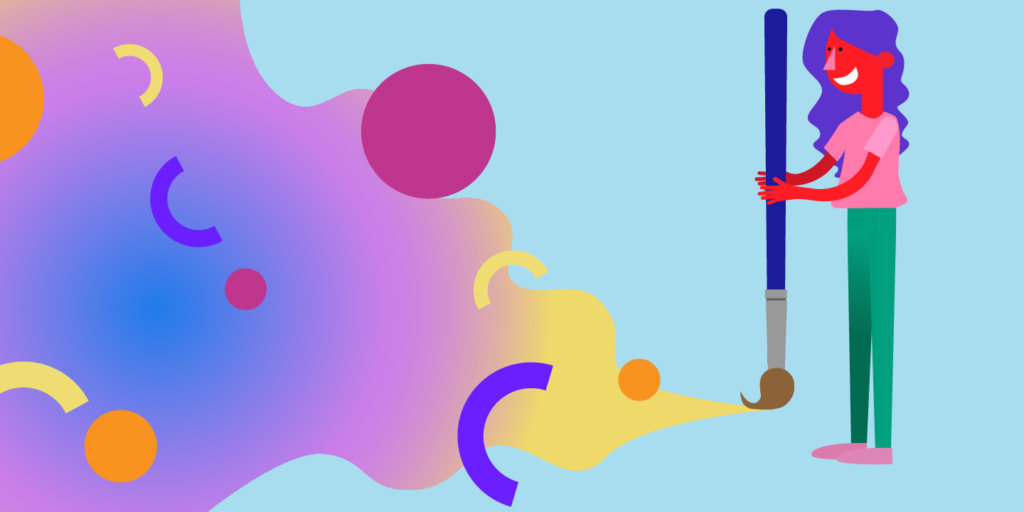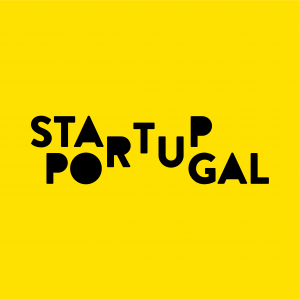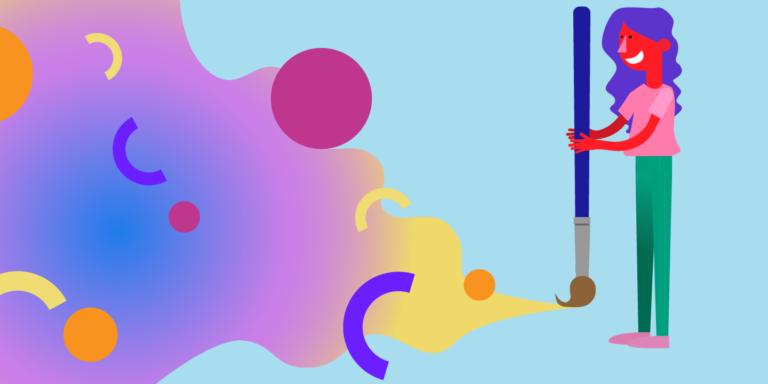How the creative industries will react to the COVID-19 pandemic

This post is part of a collaborative effort between Startup Portugal, The Next Big Idea, and Sapo24, meant to create relevant content to tackle the COVID-19 pandemic.
Content available in Portuguese.
In the 60s, philosopher Raoul Vaneigem wrote that “living has become reduced to the economy of space.” He probably didn’t imagine that this sentence would be more true now than it already was. Living in confined spaces, experiencing but a small fraction of what life should be, being probably and constantly afraid — worst, accepting it as the only means possible to keep our ever closing circles of relations intact. This new economic reality, the scarcity of spaces and possibilities, represents a great challenge for all industries, but one, in particular, felt the impact of a pandemic spreading panic: the industry of arts and creative outputs.
We’re talking about a complete shutdown on an industry that lives, in essence, of gathering people — the forbidden human action of the COVID-19 era, doing anything but being together. Let’s factor this into real events: museums closed, venues and clubs cancelled all events, books are struggling to make the jump from the shelves to bedside tables now more than ever, theatres could not have any people in, movies are left to die like abandoned apartment complexes in post-apocalyptic scenarios. A whole industry, an industry itself fragile and living of the foam of each day, gig by gig, was left with no income whatsoever. And even if governments pulled through, like it is already happening, the whole way of distributing content is compromised.
We’re now watching more Netflix than ever before and listening to less music. Musicians have no shows and no royalties – maybe that’s why Tom Morello from Rage Against the Machine wants to be your guitar teacher. There are no sports competitions to watch. Leagues, associations, tours and cups around the world came to a standstill, either to keep fans home or to protect their players and major marketing assets. Ronaldo even refused to go back to Turim to keep playing – meanwhile, eGamers are comfortably taking over our eagerness for competition with FIFA, Fortnite and League of Legends and you’re already installing the Twitch app to join in.
Dancers, actors and performers are now orphans of stages and venues that could host them. Technicians and professionals who engage in this sphere are currently without any prospective new working opportunity — society, though, moves on to Instagram and Facebook lives of stand up comedians, musicians and such, and finds joy by claiming the discovery of new means of productivity, be it baking bread or attending online yoga classes.
Designers, videographers, copywriters are being overlooked due to an impending economic slope resulting of the pandemic – despite businesses, entrepreneurs, companies looking for new ways to be relevant, to launch new solutions for newfound problems, thus actually needing ways to better communicate it; Simultaneously, and almost ironically, Facebook ads network was and still is under immense demand.
Museums are closed. Sources say museums in the USA are losing 33 million dollars every day, both in box office and funding, having laid-off numerous professionals. With so many cultural institutions closed or on standby, our attention span has diverted elsewhere – too often to documental series about big cat trafficking cartels with murderous, drug smuggling, psychologically abusive backgrounds. The creative industry is under pressure and in dire need of solutions. More so, probably, than any other sector.
For music professionals, the main income for the industry professionals, labels and distributors, has now a new challenge in converting their products. Spotify, Deezer and similar platforms have registered drops on their usage (with curious, albeit not surprising surges for genres like children’s music and classical). Digital song sales have hit a similar stump, dropping immediately as lockdown measures change behaviours. Even services such as Amazon and other e-commerce platforms announced their priority would be essential goods, leaving records and physical formats without distribution and buyers, except via dedicated sellers. Those who still stream and look for mood charts, a trend that Spotify has been leading, look more often to the “chill” moods rather than any other option, trimming down the diversity of content streamed, and consequently the number of artists, record labels, agencies and distributors who would get any royalties.
While the creative industries, in general, might be on the verge of taking a huge role in defining and communicating new habits, artists and human expressionists, people whose activity added new layers of meaning to our world and created escapes, both imaginary and physical, for our routines, now seem to be trapped by this seemingly new social paradigm.
Striving for survival
Obviously, there are new trends, new influencers, new memes coming up — a world connected by optic fibre is an ever-changing reality. And while some people are looking for new purposes to their old content, some are adapting with either their own creations or with samples of social distancing ways. It comes as no surprise that the LA Times is already referencing “Quarantine Pop” as a new genre, with Cardi B screaming “Coronavirus is coming to get’ya” paving the way for Tik Tok and Instagram meme accounts to generate new sampled tunes.
We still look up to artists and creative jobs for some immediate hope, relying on artists and cultural agents — whom, curiously, have been not seldomly overlooked. The new social experience is framed by screens and windows, and seems more distant than ever, and art plays a huge role in bringing people together and keeping communities going.
DJs and musicians are storming streaming services and social networks to sing us songs of hope, without a clear model of how to monetize and mitigate the financial restraints imposed by the pandemic, and promoters are finding new ways to add value to the conversation. Sound and light technicians are in even worse conditions, with seemingly no way to pivot and start new activities with their current skills. In Portugal, initiatives like online festivals didn’t take long to help self quarantined people with Instagram gigs, while others created online broadcasting platforms with a clear goal to raise funds for musicians. This is a concern resonating a bit everywhere, like The Rattle co-work company sending all profits to Help Musicians UK initiative. Some promoters are also migrating their content business from an IRL situation to a URL one, looking for new ways to finance their efforts with curated playlists, inside stories and whatnot, fueled by platforms like Patreon.
Theatres are testing with live stream, with Porto’s Teatro Nacional de São João leading the way and broadcasting renditions of modern plays online. Booksellers and writers are also looking for new solutions, like Antígona and Orfeu Negro did with its “Adopta uma Livraria” (literally “Adopt a bookshop”) initiative, sharing 30% of profits from online sales with independent bookshops. The film industry is also striving to the best of its ability, with a key example of private-public initiative taking place in the UK for a relief fund of £2,5 million for tv and film professionals set up in partnership with BBC, Netflix and Warner Bros, among others. In France, Netflix partnered with Audiens and donated €1 million to support the audiovisual and film industry in the country. All in all, preventive measures to support the content providers of the biggest streaming platform we know.
The fashion industry was probably the first to pivot and find new ways to stay relevant, while the exchange of goods and services came to a halt — needless to add that work from home haute couture is still not on the table of potentially successful ideas for fashion conglomerates. All over Europe, textile workers focused their attention on mask production, in order to answer this newfound demand. Some brands pivoted other production bases from perfume and cologne making to start the production of disinfectant gels. Still, these are short-term measures for a problem that will probably reach mid to long-term durations. This new reality might bring some well-needed fresh air to the industry, but the menacing pestilence of pandemic habits seems to raise new questions on the industry’s models every day.
Entertainers are also using new models, creating impromptu shows on Instagram that could be a TV show, generating televised content specific for our portable devices. In Portugal, actor, comedian, and screenwriter Bruno Nogueira has been reaching out to his own community of artists and created a movement nothing short of phenomenal. With guests as big as Maria João Pires, as well as other musicians, actors and comedians, he’s broadcasting via IG Lives some beautiful and unrepeatable moments (listening to Pires’s interpretation of Debussy’s Claire de Lune left many in awe while storming over 70k Portuguese people to like and follow an AM Radio casting from the North Pole took the tiny outlet owner, host and DJ by surprise). Most importantly, Nogueira gathered a loyal audience of around 70 thousand people who follow his late-night bursts of surreal conversations, moving artistic endeavours and easing the individual pains of social distancing for some.
The author and comedian is, as you can imagine, far from being the only one rising to influencer levels on social media. Singer Ágata, girl band star from the 80s and famous romantic singer in solo ventures, is now doing new karaoke versions of her own tunes, adapting lyrics with social warnings; it’s now trending on Tik Tok, with users lip-syncing her female empowerment classic “Sozinha” (literally “Alone”) as a new version focusing on the need to overcome the virus by themselves. Funk producers from Brazil’s favelas are also releasing block party bangers with instructions for how to wash hands, and some actors are even taking this chance to share some relevant information on how to cope with social distancing and self-isolation or how tests are made. Crisis is, indeed, a fuel for creativity and this isn’t the first time we witness it, nor will it be the last.
Museums are also considering new approaches and moving to online tours, displaying their art via a screen. It’s not the same as feeling the live texture of a piece, but it is as close as it gets to get out of self-quarantine, even if only for short moments of web surfing. New ways are being paved, but monetization is still a huge challenge. And without any new hope of finding new commercial models, the cries for help intensify all over the world.
What it could be, how it could be
None of the above mentioned is new. Not for us and definitely not for governments, who have been hearing the artists and creatives without questioning how essential they are for each country. We often forget that cultural and economic hegemony go hand to hand. We often overlook that culture is one of the main vehicles for consumption and tourism, bringing closer to us the cultural expressions that we’re more familiar with, be it a Hollywood movie, a British rock band, an independent French film director, or a classic Russian writer.
Aware of this, some governments have risen to the challenge and made efforts to support their cultural and creative tissue. The UK’s Arts Council has a relief fund of £160 million, £20 million of which set specifically for freelancers. Germany is no different, including artists and freelancers in its €50 billion for SME. This latest approach includes grants for venue rental, loans for bridge financial bottlenecks, social security and unemployment insurance for freelancers, which may also apply for advanced tax refunds.
Portugal’s Ministry of Cultural didn’t hold back on the fight. Firstly, in early March, by suggesting well ahead of time all promoters and venues to consider cancelling events for the coming months, a solid week before the central government announced the state of emergency to fight the pandemic. Specific measures soon followed with branch institutions, such as GDA and DGArtes assessing within their communities how the COVID-19 has been impacting each creative profession.
The level of engagement with these industries was made clear when a not so fortunate project for a music festival broadcasted on cable television was shut down due to all the criticism professionals raised about its viability. The Ministry rose to the occasion and after hearing its community acted swiftly and accordingly. Also, freelancers who find themselves out of income overdue to the pandemic are covered by the social security relief created for the pandemic — which covers gig professionals whose activity came suddenly to a halt.
While new measures are still being considered, the government didn’t shy away from turning to privates and creating a marketplace, in partnership with tech companies like Outsystems and Academia de Código and Hi Interactive, that sets up a direct channel for corporations to fund cultural projects, Portugal Entra Em Cena. Despite early reports from museums all over the world saying private investment and donations dropped brutally, privates are now finding new ways to fund art institutions. This, though, might not be enough, with social distancing imposing the rules of not so new problems, resulting from an atomizing social media spreading anxiety, depression and isolation amongst us long before the new Coronavirus came to be.
There’s a saying: from extreme times come radical minds. Times like these we’re living bring to the surface the best and the worst of each of us, and of our society as a whole. It also and often means this is the time for a change. Maybe in consumption behaviour, where the need to rethink social gatherings comes forth, and the ways to appreciate and foster creativity finds new paths out of a crisis. Not long ago, live stream was already a trend amongst the vaporwave music scene, with hundreds storming online channels while two hands were enough to count people actually present. Boiler Room expanded the same idea for the clubbing scene, allowing via YouTube (and sometimes via PornHub) a virtual simulation of a club experience.
Maybe the trick for venue capacity management relies on encryption, as crypto raves did over the past years in Berlin, with promotion and access happening exclusively via Blockchain. Maybe the model of the museum, where a ticket grants you access to exhibitions isn’t enough; maybe their link with the artists and content producers has to be taken to other levels, considering new ways to distribute art that don’t rely solely on in-loco visits. Maybe new forms of expression will find ways into museums, taking an active part in their transformation.
On the other hand, virtual realities are not the only dimensions staging life events. The novel coronavirus might have put a question mark on all inside venues, with a pulsing need for imposing stricter, smaller capacities. This brings forth a new opportunity for open-air spaces to take over — with this in mind, next steps would be the context for art exhibition outside museum walls (something Serralves, for instance, has been doing exemplary), as well as balance between showcasing and the preservation of art pieces. Countries like Portugal, where the weather is mild enough to make outside scenarios attractive may be facing a real edge in proposing new social contexts.
There was no real way of predicting such a situation, with many dismissing environmental concerns or simply forcing the same practices with no regard for social change. This pandemic unfolded a new chapter for the humankind, one where all we took for granted seems to be on the verge of change, maybe for good. The tone on which the text will be written remains to be seen. One thing is certain: dismissing creatives from generating new experiences, from improving our habits and from taking an active role in innovation is a mistake. Humanity under shutdown is eager for new ways to bypass anti-social bubble media and to reconnect, to recover from the traumatic experience of imposing social isolation on a particularly social species. It won’t take long until we look to artists for new escapes, has it often happened. The scifi golden era of dreaming new social possibilities and new technologies wasn’t so long ago that we should’ve forgotten its contributions — contributions that seem to be more of a necessity once again.
The world is closed, but only for the time being. Creative solutions will open new possibilities. And we should be open to engage them as soon as possible. For our sake, and for the sake of all creatives adding meaning to our lives.
Other blog posts



